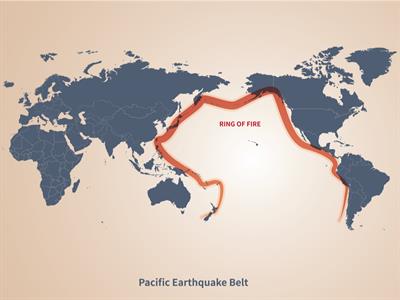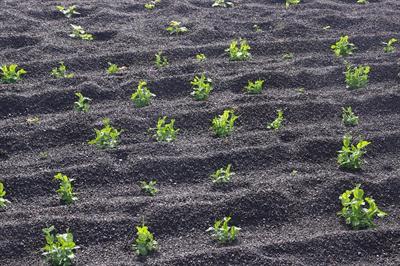PDF chapter test TRY NOW
Distribution of Volcanoes
Generally, there is a direct relationship between volcanic regions, earthquake zones and plate boundaries. It is observed that around 80% of volcanic activity is found along subduction boundaries. Following this, around 15% of volcanic activity is found in the mid-ocean spreading areas and continental rifts. The Circum-Pacific Ring of Fire is one such region where the Pacific Plate meets many surrounding plates. The Ring of Fire is the most seismically and volcanically active zone in the world. Rest are intra-plate volcanism.

Constructive Effects of Volcanoes
- Volcanic soils are very fertile and rich in minerals that promote agricultural activities. E.g. the Deccan Plateau in India

- Volcanoes give rise to islands and places which may, in the future, suitable for human habitation. E.g. New island in the South Pacific ocean formed due to the Hunga Tonga volcano.
- Hot springs are used to supply hot water for domestic, industrial use and also to generate electricity.
- The hot volcanic region helps in generating geothermal energy.
- They also sometimes bring precious rocks like diamond formed at greater depths to the surface through eruptions.
- Their stunning beauty attracts many tourists worldwide.
- Volcanic materials are used as building materials.
Destructive Effects of Volcanoes
- Volcanoes cause severe damage to life and property.
- Their violent eruption causes Earthquakes, flash floods, mudslide and rockfall.
- Lava thrown out can travel very far and burn, bury, or damage anything in its path.
- A large amount of dust which consists of harmful heavy metals, ash and soot particles, makes breathing hard and has a heavy toll on health.
- Volcanic eruptions can alter the weather conditions and disrupt transport (Iceland volcanic eruption) in and around the volcanic region.
